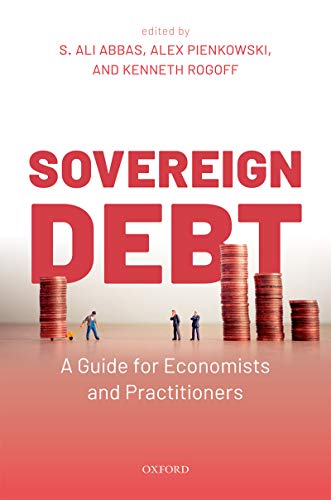- The book was envisaged 10 years ago – the thought, the authors, and the publishers needed to be brought together before the ultimate fruition, which is a testament for academics to envision their end-goals well in advance.
- The book is written with the intent of communicating the distilled wisdom pertaining to sovereign debt issues to specialists and non-specialists without obfuscating the key matters behind regression models and equations. However, it is not exactly ‘light reading’ either and some prior knowledge of the issues would be helpful.
- It is a compilation of contributions from the world’s leading sovereign debt experts.
- The book covers the full cycle of debt from when, how, and why sovereign debt began to what the challenges are going forward.
- Initial borrowing started in the context of wars, when governments realized that they needed more funds than they could accumulate from simply taxing citizens.
- First documented evidence of sovereign borrowing dates back to the 100 years’ war, when British monarchs borrowed money from Italian bankers.
- As we traversed into more civilized times, borrowing became increasingly more relevant to current spending and infrastructure, rather than just wars.
- Change in Debt-to-GDP ratio = Interest Growth Differential * Debt/GDP – Primary Balance + Currency Depreciation * FX Debt/GDP + Residual;
- Aggressive fiscal tightening, especially in fragile economies, has resulted in stagnating GDP growth coupled with an increasing Interest Growth Differential (Example: The Great Depression).
- Alternatively, lowering the interest rates below the prevalent inflationary pressure encourages the share of FX and short-term debt to rise, as confidence in local currency plummets (Example: post-WW 2).
- There exists a surprisingly large amount of subjectivity with regards to the definition of sovereign debt; so much so, that depending upon how one chooses to define and calculate it, in US debt could oscillate between $20 trillion and $75 trillion. This lack of standardization makes comparing debt levels quite difficult across countries.
- With regards to why countries acquire debt, the motives can be broadly divided as either ‘good’ or ‘bad’.
- Good reasons include tax smoothing/countercyclical demand stimulus; that is, governments borrow during times of economic downturns, rather than placing further contractionary fiscal pressures in the shape of taxes, which could result in a deeper recession; this smoothens the economy after a negative shock. Other examples of good reasons to borrow are investments in education and high-return infrastructure projects.
- Among bad motives, there is political manipulation – the outgoing government goes on a spending binge, accumulating large sums of credit in the process, which then come due during the incumbent government’s tenure, crippling their financial capability to improve social welfare programs.
- When determining whether or not debt is sustainable, it is important to evaluate the feasibility of the future surpluses – if the Debt-to-GDP ratio can be feasibly stabilized with the projects that the debt is supposed to finance, the debt is deemed sustainable; if not, it is deemed unsustainable, and might require restructuring.
- Internationally acquired foreign debt may have a lower explicit interest rate, but it also runs the risk local currency devaluation. Contrarily, local debt might be more expensive in terms of higher interest rates, especially in emerging markets, but it does not bear currency risk as such.
- From a wider policymakers’ standpoint, what may be optimal for governments might not always be as attractive to the banks. For example, if a government has pushed out its long-term debt onto the banking system, the banking system would be very vulnerable to interest rate risk.
- A large share of domestically-held debt helps avoid a crisis, but if a debt crisis still ensues, it may be harder to resolve.
- Rating agencies, lawyers, and economists define sovereign default differently.
- Sovereign defaults are 30% mismanagement and 70% misfortune.
- Greece (2010) is a classic example of the too-little-too-late scenario, where it was indicated that it might default but was lent money against the hope that it may help avoid default; such scenarios exacerbate the severity of the default and complicate the resurrection process further.
- Debt markets have very short memories, and experience of Latin American countries show that perhaps there is not much long-term impact from defaulting. – Mark Mobius.
- When you are borrowing for large projects, there can be concerns around valuation methods, which can subsequently pose problems pertaining to over-borrowing, which adds unnecessarily to the interest expense.
- In a high debt-low space scenario, whereby a country acquires a lot of debt to expand government expenditure, the markets can sometimes get nervous, which leads to any resulting GDP growth being subsequently offset by increases in interest rates.
- IMF values its role as ‘the lender of last resort’; therefore, if the fund is not assured of its preferred status, it will likely not be a participant in a debt-driven situation.
- To reiterate, it is important to remember that if fiscal consolidation kills the market, it becomes increasingly more difficult for each lender to be paid back. Therefore, it is especially inadvisable to aggressively contract in vulnerable economies.

